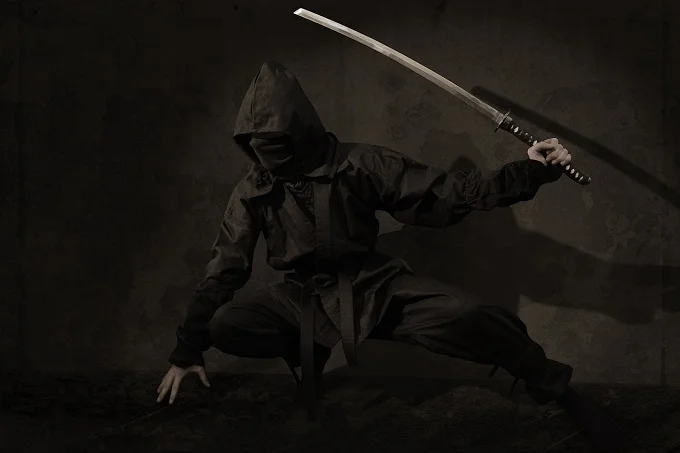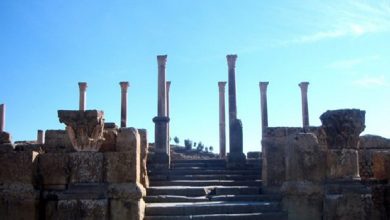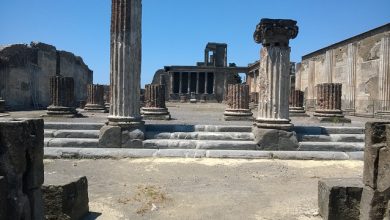Order of Assassins: insidious killers of the ancient world

In the past centuries ago, a group of shadowy and flawless killers known as the Assassins started to gain a murky reputation (Assassins translated from Arabic as “hashish eaters”). A violent Ishmaelite sect was known as the mysterious organization of “bounty hunters” that operated in the Middle East during the period of the Crusades. The armored crusaders were put in a state of constant fear by the suicide warriors. In later times, assassins worked for both themselves and for pay. The term “assassin” has made its way into the vocabulary of contemporary English with this particular connotation in mind.
Hassan ibn as-Sabbah (1051-1124), who established a kingdom in the mountainous areas of Persia, Syria, Iraq, and Lebanon for more than 140 years, is credited with being the founder of this religious group. Ishmaelites used their intelligence and prowess to steal the Turko-Seljuks’ formidable castle in the valley of Alamut in the year 1090. This fortress later became the capital of the state.
Hassan ibn as-Sabbah, who the crusaders referred to as the Elder of the Mountain, resided in Alamut for a total of thirty-four years throughout his lifetime. He established a rigorous way of life for everyone who lived there, with no one being exempt from its requirements. Even though he was married and had children, Hasan lived a very simple life for himself and his family. He desired complete submission from the people under his rule.
After the Sheikh saw his son drinking alcohol, he had one of his sons put to death as a punishment. If he had reason to believe that his other son had been involved in the murder of a certain preacher, he would have given that son the death penalty. Hasan was quite stern and impartial, almost to the point of being callous. Because of this, he drew sympathizers, and within a short period of time, around 60,000 people gathered under his control.
It is stated that the Elder of the Mountain got the idea to convert his followers into fanatical killers when a local Ismaili leader was put to death in the city of Savva on the orders of Nizam al-Mulk, the chief Vizier of the Seljuk Sultan. Nizam al-Mulk was responsible for carrying out the order.
As soon as the Elder of the Mountain found out about this, he climbed to the top of the tower in Alamut and made the following proclamation: “The slaying of this shaytan al-Mulk shall come before the happiness of heaven!” As he made his way down the tower, he saw that a group of extremists had already gathered at the base of the structure, where they were ready to execute the Vizier. The most resounding yell came from a man named Bu Tahir Arrani, who said that he was willing to pay the price of the Vizier’s vengeance with his life. It was Hassan ibn al-Sabbah who selected him to carry out the murder.
On the 10th of October, 1092, in the city of Savva, which is located south of Tehran, Bu Tahir Arrani was able to approach near to the stretcher that was being used to carry al-Mulk out of the tent while the festival of Ramadan was in progress. After stabbing the Vizier in the chest with his dagger, the assassin promptly turned himself into the guards so that he might be put to death as soon as possible. He did so with a grin on his face.
Hassan gave the order for a memorial tablet to be hung in Alamut, and the name of the killed guy was to be etched on it. Hassan also gave the order for the name of the holy creator of vengeance to be written next to the name of the deceased man. In the years that followed, Hasan’s life, an additional 49 names of those who had been slain by the Assassins were added to this “plaque of honor.” These names included sultans, princes, monarchs, governors, priests, town governors, intellectuals, and authors.
The Elder of the Mountain was persuaded that zealots who were prepared to commit themselves were a dangerous force after the first political killing. He chose a fighting band of fidawis or fidayeen, which means “self-sacrificers for the religion,” from among the young men, giving preference to orphans in this group of young men. This group may have been the first terrorist organization ever to exist on the face of the globe. Hassan taught his fidayeen to believe that after death, they would without a doubt be welcomed in paradise. In addition, he used his considerable expertise to demonstrate to the potential murderers what it was like to live in paradise.
In one of the inaccessible valleys between the mountains, in a location that was only known to a handful of Hassan’s closest aides, there was laid out a magnificent garden with beautiful flowers and fruit trees, and in the center of the garden stood a palace decorated with gold. This garden was known as the Golden Palace. There were springs close to the walls of the palace that supplied the area with wine, milk, and honey.
The castle and the garden were teeming with the most stunning ladies, all of whom were musically talented and could sing, dance, and play instruments brilliantly. Everything fit together perfectly with what Muhammad had spoken about in heaven. Hassan would accomplish this so-called miracle on occasion in order to convince his followers that he, too, was a prophet and that he had the ability to transport a person to heaven while they were still alive.
A number of young guys who were in the process of becoming fidayeen were given hashish, put to sleep with alcohol, and then transported to the hidden garden. When they regained consciousness and witnessed the incredible beauty as well as the lovely guardians who served them wine, charmed their ears with music and singing, and delighted their guests with various forms of amorous caresses, they were certain that they had indeed reached a true paradise. After spending a few days in paradise, the lads were eventually awakened from their slumber and brought back to the citadel.
There, Hassan inquired as to where they were, to which they answered, “In paradise, owing to your kindness, sir,” and proceeded to describe the many aspects of living in paradise to him and his companions. The remaining young men who had gathered around them felt envious of those who were fortunate enough to be there, and they shared a sincere desire to sacrifice their lives for the noble cause championed by the Elder of the Mountain. This was done with the hope that they would be able to enter paradise as quickly as possible, which had started to feel very real to them.
The training was given to the fidayeen so that they could perform to the best of their abilities. They were prepared to fight in adverse conditions, use a variety of weapons, and identify and avoid poisons. They were forced to endure extreme temperatures by standing still against the castle wall in order to hone their capacity for patience. They were instructed that in order to be considered a genuine assassin, one must possess the ability to patiently wait for years before striking a fatal blow to their adversary.
The aptitude for metamorphosis that they had was just as vital to them as their fighting ability. They were able to change so drastically that they were unrecognizable. Assassins were able to sneak into the stronghold of their adversary and murder their target by disguising themselves as a touring circus group, medieval Christian monks, healers, dervishes, Eastern merchants, or local vigilantes. And even during the most horrific tortures and executions that the Assassins were forced to endure, they attempted to keep a grin on their faces.
The religious group was organized in a rigid hierarchical framework. At the absolute bottom were the common members, known as the “fidayeen,” who were responsible for carrying out the executions. They were promoted to the following rank if they were able to live for a few more years, which was senior private, also known as “rafika.”
This was then followed by the position of “officer” with the title “dai,” and the post of “general” with the title “dai al-kirbal.” Only the enigmatic Elder of the Mountain, who remained concealed from view, was obeyed by the generals.
The reign of Hasan ibn al-Sabbah was the time in which the Assassins were at their most active. Under his leadership, they were able to extend their sphere of influence across a significant portion of the Muslim world. They did this by constructing a chain of fortified mountain strongholds in the northern regions of Iran and Syria and by pursuing a policy of covertly eliminating their adversaries.
According to the “plaque of honor” in Alamut, one hundred eighteen Fidayeen were responsible for the deaths of seventy-three individuals, with 49 of those deaths occurring under the Elder of the Mountain’s reign. There is a good chance that the eastern monarchs started to purchase the allegiance of the assassins, which contributed to the “drop in performance.” On the other hand, at the same time, they started paying them to get rid of undesirable aristocratic Europeans.
Hassan ibn as-Sabbah passed away in his castle in 1124, but the order did not perish right away and continued to be a formidable power in Persia and Syria for a considerable amount of time after that. The Assassins were given an “order” to kill the son of Raymond II of Toulouse, who was also the Count of Tripoli, in the year 1145. They launched an assault on his tiny army as it stood guard at the gates of Antioch, and then they chased him into the streets of the city. The assassins broke inside the chapel where the heir to the throne of Tripoli was hiding out, and they killed him as he was kneeling in prayer at the altar.
In retaliation, a force of Raymond II and a detachment of Templars chased the assassins into the mountains and encircled Alamut to seize control of it. The Elder of the Mountain and Robert de Craon, Grand Master of the Templars, came to an agreement that the Assassins would give the Crusaders a “symbolic” payment of 2,000 gold pieces. This would be paid to the Crusaders.
When the Crusaders often had a need for hired assassins, and the Assassins had a supply, they were able to coexist peacefully for a period of time. This was particularly true because the Assassins had a supply. However, after some time had passed, a disagreement between the two of them developed, which led to the termination of their friendship.
Since then, rulers in the core of Europe have been uneasy whenever the subject of assassins is brought up. It just took one casual remark against the Elder of the Mountain and his people for someone to lose their life, as was the case with Count Boemund, who was killed in broad daylight in the midst of a large mob outside the gates of Antioch.
Conrad of Montferrat, a claimant to the kingdom of Jerusalem, was killed by the fidayeen in 1192 when they intercepted him at the gates of Tyre and executed him there. Assailants were responsible for the deaths of three caliphs, six Viziers, several dozen governors of provinces and city rulers, quite a few significant clerics, and the famous Iranian scholar Abul-Mahasin Ibn Taghri-berdi.
But despite this, the Assassins’ dominance was eventually broken: in the year 1256, Mongol armies assaulted the citadel of Alamut, and after three days of nonstop battle, they won control of the castle. In the year 1260, the same thing happened to Masyaf, which is located in Syria. The assassins were made illegal, and obscene amounts of money were offered as prizes for their heads. They were eradicated almost entirely from the face of the earth.
Those who were still alive were compelled to flee into the surrounding mountains and burrow into the dirt. It is said that some of them were able to elude capture and make their way to India, where they served as slaves of the goddess Kali. According to legend, assassins were responsible for the establishment of a caste of assassins in India that came to be known as tagi (deceivers) or phansigars (stranglers).
The “self-sacrificing” fidayeen were resurrected in the middle of the 20th century as members of the terrorist organization Fedayane Eslam. This organization was founded by the Iranian Mullah Nawwab Safavi and carried out assassination attempts on political and public figures in Iran and the Middle East. The Fidayeen are still, on occasion, referred to as terrorists of an Islamic faith who are fanatical in their actions.
Ismailism is a religious movement that is still active in modern times. The reign of the Ishmaelites was taken up by Prince Agha Khan IV in 1957, who was a direct descendant of the most recent Elder of the Mountain. The Assassins were never able to go back to their previous level of strength, as can be seen by looking at the remains of the forts.




